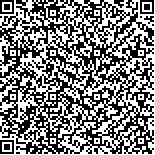| 摘要: |
| [目的]传统分类方法存在人为主观选择特征、模型无法在大范围泛化的问题,文章利用非监督特征学习的深度学习方法进行冬小麦识别,以解决传统分类方法无法在大范围进行自动化作物识别的不足。[方法]该文集成残差网络(Residual Nets,ResNets)和金字塔场景解析网络(Pyramid Scene Parsing Network,PspNets)构建Res.PspNet,进行冬小麦深度学习自动化分类。在山东全省获取80个村的无人机航拍影像,利用米级遥感影像和对应的标记样本作为“海量标记样本”训练土地覆盖识别模型,以此为基础模型迁移训练冬小麦分类模型,自动提取出冬小麦分布。[结果]实验结果表明,以训练出的土地覆盖数据作为基础模型训练冬小麦模型,收敛速度快,具有很好的泛化性,在不同农业景观调查村中均得到比较准确的结果。从整体验证区域来看,冬小麦总体精度达到了90%以上,区域冬小麦总面积精度达到99%。平原区冬小麦识别精度更高,总体精度达到了90%以上,区域面积精度达到99%,表明模型对冬小麦种植地块规整、生长状态均质的区域,识别精度较高,而山区由于地块破碎、冬小麦长势差异较大,空间卷积会弱化小麦特征且出现“同物异谱”现象,这影响了在该区域内冬小麦的识别精度。[结论]Res.PspNet卷积神经网络能够有效地学习出无人机影像的特征,实现了基于航片影像进行非监督自动化冬小麦“端—端”分类,这也将一定程度上降低冬小麦提取的工作量。 |
| 关键词: 卷积神经网络ResNetPspNet 迁移学习山东 |
| DOI: |
| 分类号:S127; F3071 |
| 基金项目:山东省第三次农业普查无人机飞行测量服务项目 |
|
| WHEAT IDENTIFICATION BY USING DEEP LEARNING ALGORITHM FROM UNMANNED AERIAL VEHICLE |
|
Liu Tongxing, Ma Mingxia, Lu Changlun, Wu Jinsheng
|
|
Survey Office of the National Bureau of Statistics in Shandong, Jinan, Shandong 250001, China
|
| Abstract: |
| Traditional classification methods have the problems that selection of features has strong personal intention and the model cannot be generalized at a large scale area. In this paper, unsupervised feature learning method is used to identify winter wheat, in order to solve the shortcomings of traditional classification methods that is not able to be applied in a wide range of automatic crop recognition. This paper integrated Residual Nets (ResNets) and Pyramid Scene Parsing Network (PspNets) to construct a Res. PspNet model for automatic classification of winter wheat in depth learning. The UAV aerial images of 80 villages in Shandong province were acquired. The meter level remote sensing images and corresponding labeled samples were used as "massive marker samples" to train the land cover recognition model. Based on this model, the winter wheat classification model was migrated and trained, and the distribution of winter wheat was automatically extracted. The experimental results showed that the training of winter wheat model based on land cover data had fast convergence speed and good generalization, and more accurate results were obtained in different agricultural landscape survey villages. From the overall validation area, the overall accuracy of winter wheat reached more than 90%, and the accuracy of the total area of regional winter wheat reached 99%. The recognition accuracy of winter wheat in plain area was slightly higher than 90% and 99% in regional area. It showed that the recognition accuracy of the model was higher in areas with regular planting plots and homogeneous growth status. However, because of the fragmentation of plots and the great difference in growth trend of winter wheat in mountainous area, spatial convolution would weaken the characteristics of wheat and appear the phenomenon of "same thing with different spectrum", which affected the accuracy of winter wheat in the region. Res. PspNet convolution neural network can effectively learn the features of UAV images and realize unsupervised automatic "end to end" classification of winter wheat based on aerial photo images, which will also reduce the workload of winter wheat extraction to a certain extent. |
| Key words: convolution neural network ResNet PspNet transfer learn Shandong |

